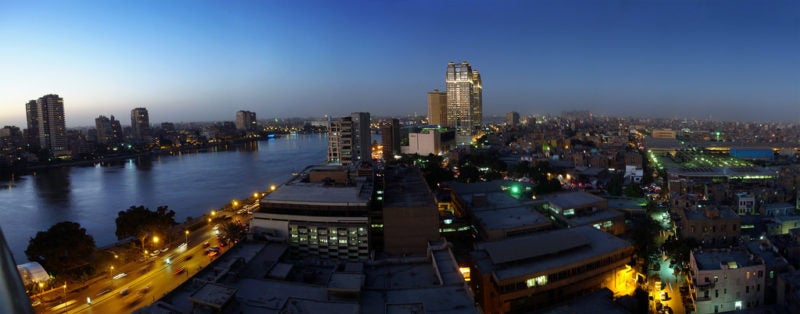Analyst: HD Growth Slowed in MENA but Not Done, Yet

Cairo by night. Photo by John Stefou, available under a Creative Commons License.
[Via Satellite 10-20-2016] The growth rate of High Definition (HD) channels among Arab countries has slowed, but not stopped, according to research from Arab Advisors Group. Findings from the group’s research show that 61 more HD channels started broadcasting from February 2014 to March 2015, reaching a total of 195 channels. From March 2015 to May 2016 however, the region saw only 17 more HD channels, reaching 212.
Mohammed Al Shawwa, general manager of Arab Advisors Group, told Via Satellite that the likely reason for the slowdown of HD is because most of the heavyweight broadcasters have already made the transition, meaning the biggest investments have already been committed.
“When broadcast in HD was first introduced, a large chunk of the ‘big name’ channels rushed to offer this viewing experience to their viewers,” Al Shawwa explained. “For them, the investments made toward broadcasting in HD were justifiable, given the huge viewer base and the revenues generated from it. As for other channels that were not as fast to jump on the wagon, the investment in upgrading to HD might have not been feasible so far.”
Al Shawwa said channels across the region can essentially be divided into two categories: big name channels that enjoy a huge viewer base, and other smaller channels with less reach. Now that most of the largest players have already committed to HD, the remaining uptake across the region will be at a slower pace.
There are still regions in the Arab World where HD is growing faster than others. Al Shawwa said Gulf Cooperation Council (GCC) countries that have higher income levels will continue to witness the highest uptake of HD content.
“Other developing countries in the region will follow for sure, albeit in a slower pace,” he added.
Much of the growth in HD is concentrated with pay-TV operators. These companies use HD as a differentiator to draw in subscribers, and subscriber revenues can then go toward covering the specialized equipment, higher bandwidth consumption, and other operating costs associated with HD.
One of the challenges to the further uptake of HD is public opinion. TV watchers in the Middle East and North Africa (MENA) region do not always see merit in HD over regular Standard Definition (SD), Al Shawwa said.
“According to a survey we did in Egypt, only 15.7 percent of respondents who watched content did so in HD; the majority didn’t. Furthermore, around 14 percent of respondents to our survey didn’t actually know the difference between HD and SD. We are aware that in countries other than Egypt the viewership of HD TV is higher, but these figures still show that HD is still not considered to be the new standard in TV yet,” he said.
Furthermore, the overwhelming majority of content is available Free-to-Air (FTA), meaning pay-TV penetration levels remain lower than in other parts of the world.
“Taking into consideration that the typical TV viewer is not expected to, and probably will not be willing to suddenly start paying for TV channels and content unless there is a major benefit from doing so, offering content in HD is considered a much needed added value for pay-TV operators that can further encourage customers to adopt pay-TV,” Al Shawwa added.
Despite the low percentage of paying viewers, Al Shawwa said he believes that customers in the Arab region are increasingly adopting the pay-TV model, thanks largely to premier and exclusive content offerings by pay-TV channels.
As for 4K Ultra-HD, Al Shawwa said Arab Advisor’s Group counted only one channel as of March 2016 in the region, that being on Yahsat’s YahLive platform. Fashion One 4K is broadcasting on the platform via the Yahsat 1A satellite.
“I believe 4K will witness similar patterns of adoption by operators as HD TV did,” said Al Shawwa. “Big channels will be early adopters, while others will wait until they adopt the technology. In all cases, I believe that it will be two to three years before there is any noticeable adoption of 4K in the region. Moreover, as with what happened with HD TV, pay-TV operators will be among the early adopters of the technology.”
Al Shawwa said existing pay-TV market players have expanded their services over the past few years, notably beIN transitioning from the provision of sports-only content to entertainment content. He also pointed out the emergence of Subscription Video on Demand (SVOD) players in the region, including Netflix, StarzPlay, ICFlix and others. As viewers warm to the idea of HD, Al Shawwa said he expects more channels, particularly smaller ones, to also begin HD broadcasts.